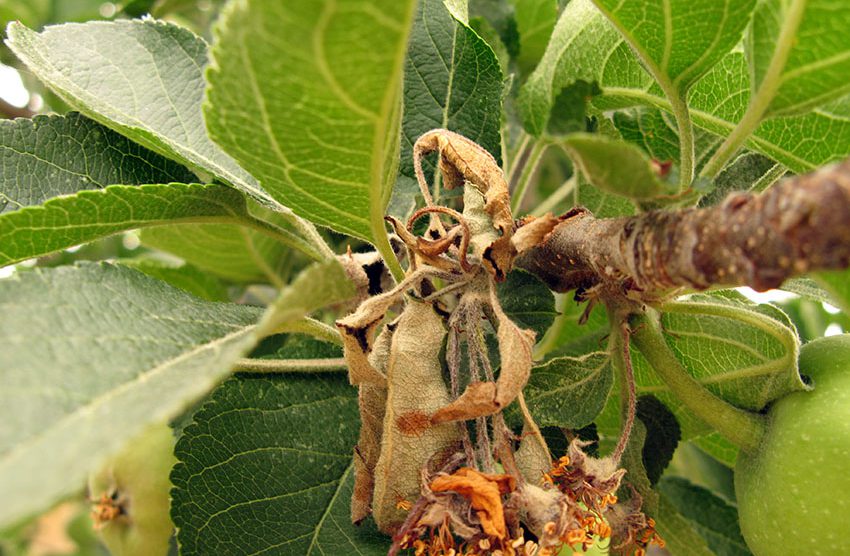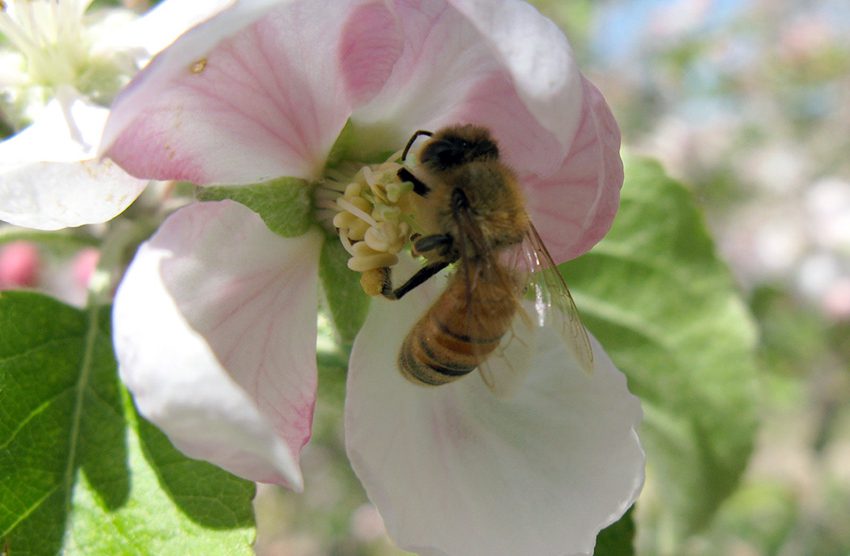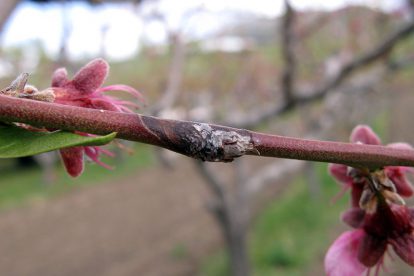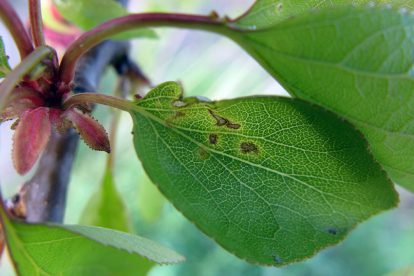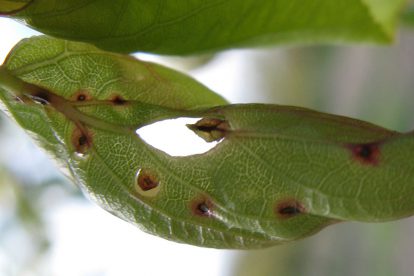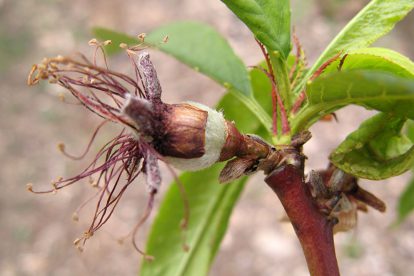What to Watch For
- Codling moth: no spray dates available yet
- Fire blight: high risk for infection of open flowers through May 4
- Coryneum blight: apply fungicide at shuck split stage
- Aphids on apple, peach and cherry (green apple aphid, green peach aphid, black cherry aphid, etc.) are building in numbers now. If leaves are severely curled, commercial growers should use Admire Pro (or generic) and backyard growers should use Ortho Fruit, Flower & Vegetable (or organic options are neem oil or insecticidal soap)
Pome Fruit (Apple, Pear)
Fire Blight
During apple and pear bloom, fire blight infections are a risk when conditions are warm and wet. For most areas of northern Utah, in particular along the Wasatch Front, the risk of fire blight is EXTREME for the next 6 to 7 days.
There is rain expected for this Sunday into Monday. So if you have trees or orchards that have been affected by fire blight in the past or are sensitive, consider an antibiotic application on Saturday, with a re-application on Tuesday.
You can watch fire blight predictions on Utah TRAPs by selected a location closest to you.
For commercial producers, most areas (except the southern part of Utah County, which has resistance) can use streptomycin. Where resistance occurs, producers should use oxytetracycline (MycoShield) or Kasumin. One application can be a mix of oxutetracycline and streptomycin.
Most diligent backyard growers should not need to apply an antibiotic. (Although if necessary, most garden centers carry streptomycin.) Instead, monitor trees closely starting two weeks after full bloom (which is when infections start to become visible). Prune out new infections immediately (on a dry day).
Codling Moth
To determine the codling moth timing, we hang pheromone traps in orchards. Once we catch moths, we can run the calculations and provide dates. As of now, we do not yet have information for codling moth spraying times in northern Utah. However, with the current warm weather, we expect that to change, and will provide the information when available.
Peach/Nectarine, Apricot
Coryneum blight
If coryneum blight is a problem on your peach, nectarine, or apricot trees, note that one of the most important times to apply a fungicide is the shuck split stage (see image above).
This pathogen is spread primarily by rain, and optimal conditions for infection are when temperatures are from 70 to 80°F.
Commercial growers can find options by clicking here.
Backyard growers can use one of the following:
- Spectracide Immunox
- Daconil (or related; containing chlorothalonil) Note that chlorothalonil cannot be used between post-shuck split and harvest.
- Captan

